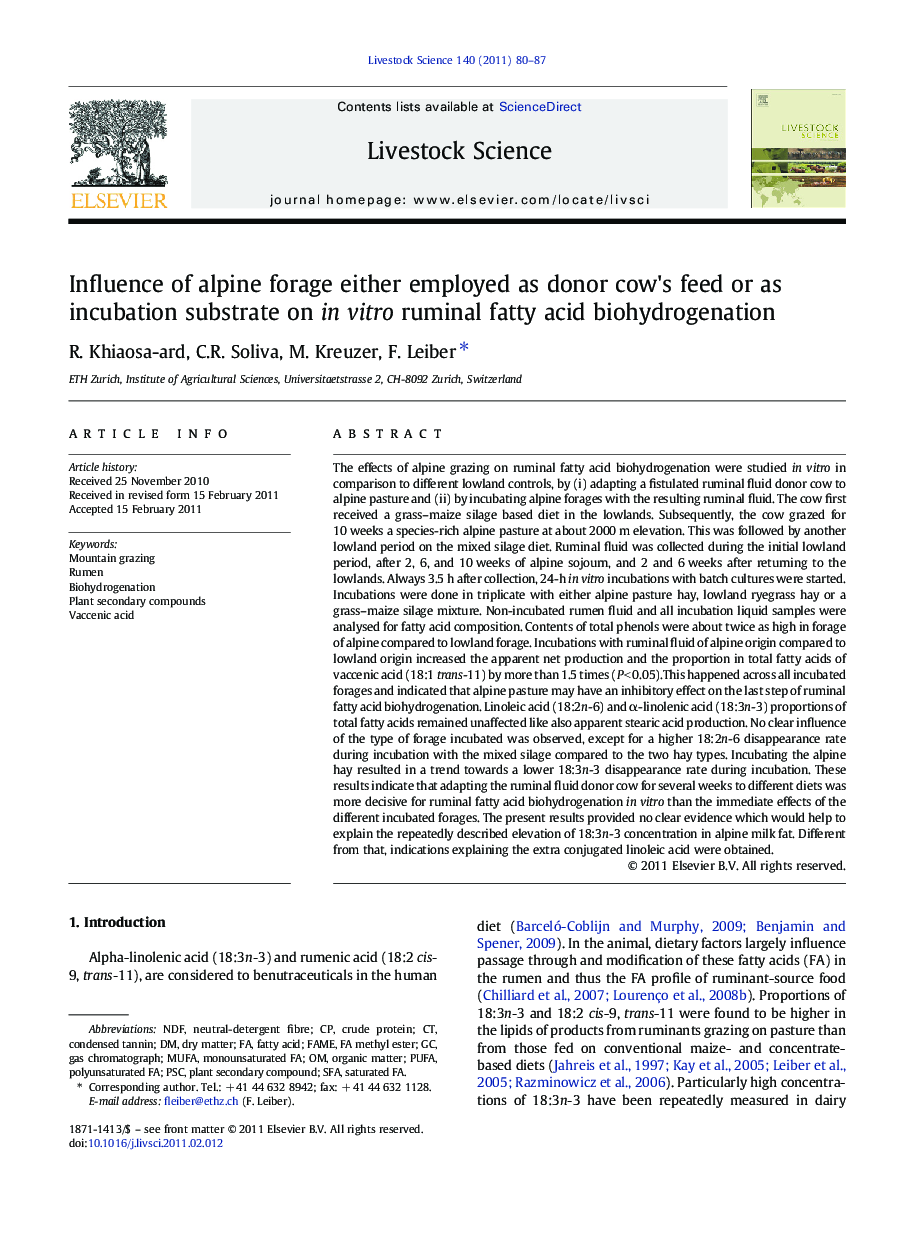| کد مقاله | کد نشریه | سال انتشار | مقاله انگلیسی | نسخه تمام متن |
|---|---|---|---|---|
| 5790881 | 1553992 | 2011 | 8 صفحه PDF | دانلود رایگان |

The effects of alpine grazing on ruminal fatty acid biohydrogenation were studied in vitro in comparison to different lowland controls, by (i) adapting a fistulated ruminal fluid donor cow to alpine pasture and (ii) by incubating alpine forages with the resulting ruminal fluid. The cow first received a grass-maize silage based diet in the lowlands. Subsequently, the cow grazed for 10 weeks a species-rich alpine pasture at about 2000 m elevation. This was followed by another lowland period on the mixed silage diet. Ruminal fluid was collected during the initial lowland period, after 2, 6, and 10 weeks of alpine sojourn, and 2 and 6 weeks after returning to the lowlands. Always 3.5 h after collection, 24-h in vitro incubations with batch cultures were started. Incubations were done in triplicate with either alpine pasture hay, lowland ryegrass hay or a grass-maize silage mixture. Non-incubated rumen fluid and all incubation liquid samples were analysed for fatty acid composition. Contents of total phenols were about twice as high in forage of alpine compared to lowland forage. Incubations with ruminal fluid of alpine origin compared to lowland origin increased the apparent net production and the proportion in total fatty acids of vaccenic acid (18:1 trans-11) by more than 1.5 times (P < 0.05).This happened across all incubated forages and indicated that alpine pasture may have an inhibitory effect on the last step of ruminal fatty acid biohydrogenation. Linoleic acid (18:2n-6) and α-linolenic acid (18:3n-3) proportions of total fatty acids remained unaffected like also apparent stearic acid production. No clear influence of the type of forage incubated was observed, except for a higher 18:2n-6 disappearance rate during incubation with the mixed silage compared to the two hay types. Incubating the alpine hay resulted in a trend towards a lower 18:3n-3 disappearance rate during incubation. These results indicate that adapting the ruminal fluid donor cow for several weeks to different diets was more decisive for ruminal fatty acid biohydrogenation in vitro than the immediate effects of the different incubated forages. The present results provided no clear evidence which would help to explain the repeatedly described elevation of 18:3n-3 concentration in alpine milk fat. Different from that, indications explaining the extra conjugated linoleic acid were obtained.
Journal: Livestock Science - Volume 140, Issues 1â3, September 2011, Pages 80-87